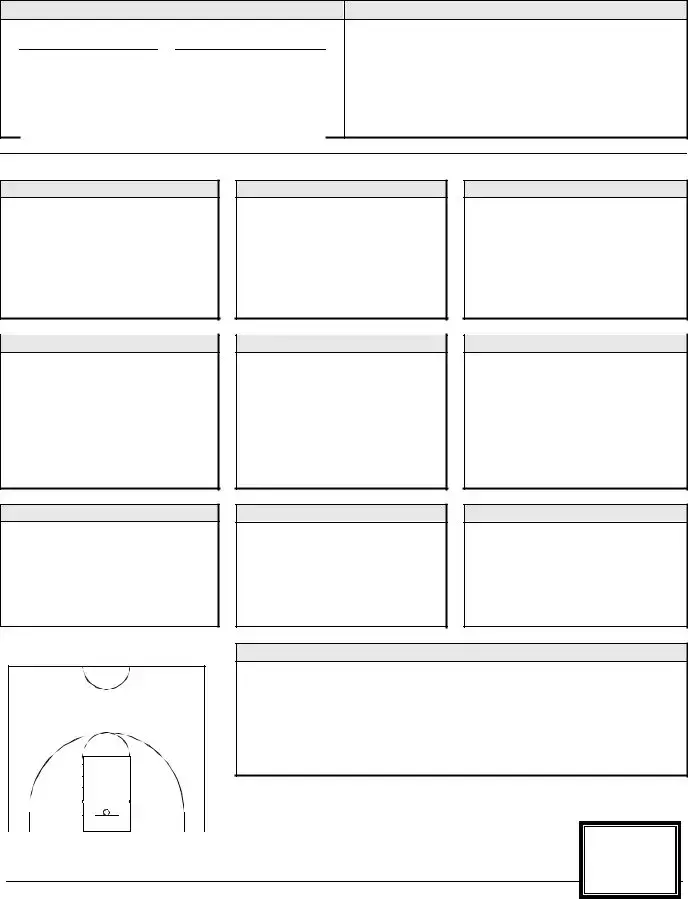The Basketball Evaluation Form serves as a comprehensive tool to assess a player's skills and performance in various aspects of the game. It provides coaches and evaluators with a structured way to record observations and ratings on different categories, such as shooting, defense, dribbling, and overall game play. This evaluation can help identify areas for improvement and strengths, guiding future training and development.
How is the evaluation scored?
The evaluation uses a rating scale from 1 to 5, where 1 indicates that a player needs improvement and 5 signifies outstanding performance. Evaluators mark each category, including shooting mechanics, defensive stance, and passing accuracy, allowing for a clear understanding of the player's abilities across different skills.
What categories are included in the evaluation?
The evaluation covers several key categories, including:
-
Shooting
-
Defense
-
Dribbling
-
Rebounding
-
Passing
-
Athletic Ability
-
Game Play
-
Coachability
Each category contains specific skills that are assessed to provide a well-rounded view of the player's performance.
The form should be filled out by coaches or evaluators who have observed the player's performance during practices or games. Their insights are invaluable in providing an accurate assessment of the player's skills and potential.
Can the evaluation be used for different age groups?
Yes, the Basketball Evaluation Form is versatile and can be adapted for various age groups and skill levels. It allows for a consistent assessment framework, making it suitable for youth leagues, high school teams, and even adult leagues.
The comments section is an opportunity for evaluators to provide additional insights or recommendations based on their observations. This may include specific areas where the player excels, suggestions for improvement, or notes on the player's attitude and work ethic. Evaluators can also indicate where the player might be most successful on offense or defense using “O” and “X” markings.
How can players benefit from this evaluation?
Players can benefit from the evaluation by gaining a clearer understanding of their strengths and weaknesses. The feedback provided can guide their training focus, helping them to improve specific skills. Additionally, knowing how they are perceived by coaches can motivate players to enhance their performance and work on areas that need development.
Is there a follow-up process after the evaluation?
Typically, a follow-up process may involve discussing the evaluation results with the player. Coaches can provide feedback, set goals, and create a development plan based on the evaluation. This ongoing dialogue can help players stay engaged and motivated in their training.
The Basketball Evaluation Form can usually be obtained from your league or team’s website, or directly from your coach. If unavailable, many templates can be found online, allowing you to create a customized version suited to your specific needs.

